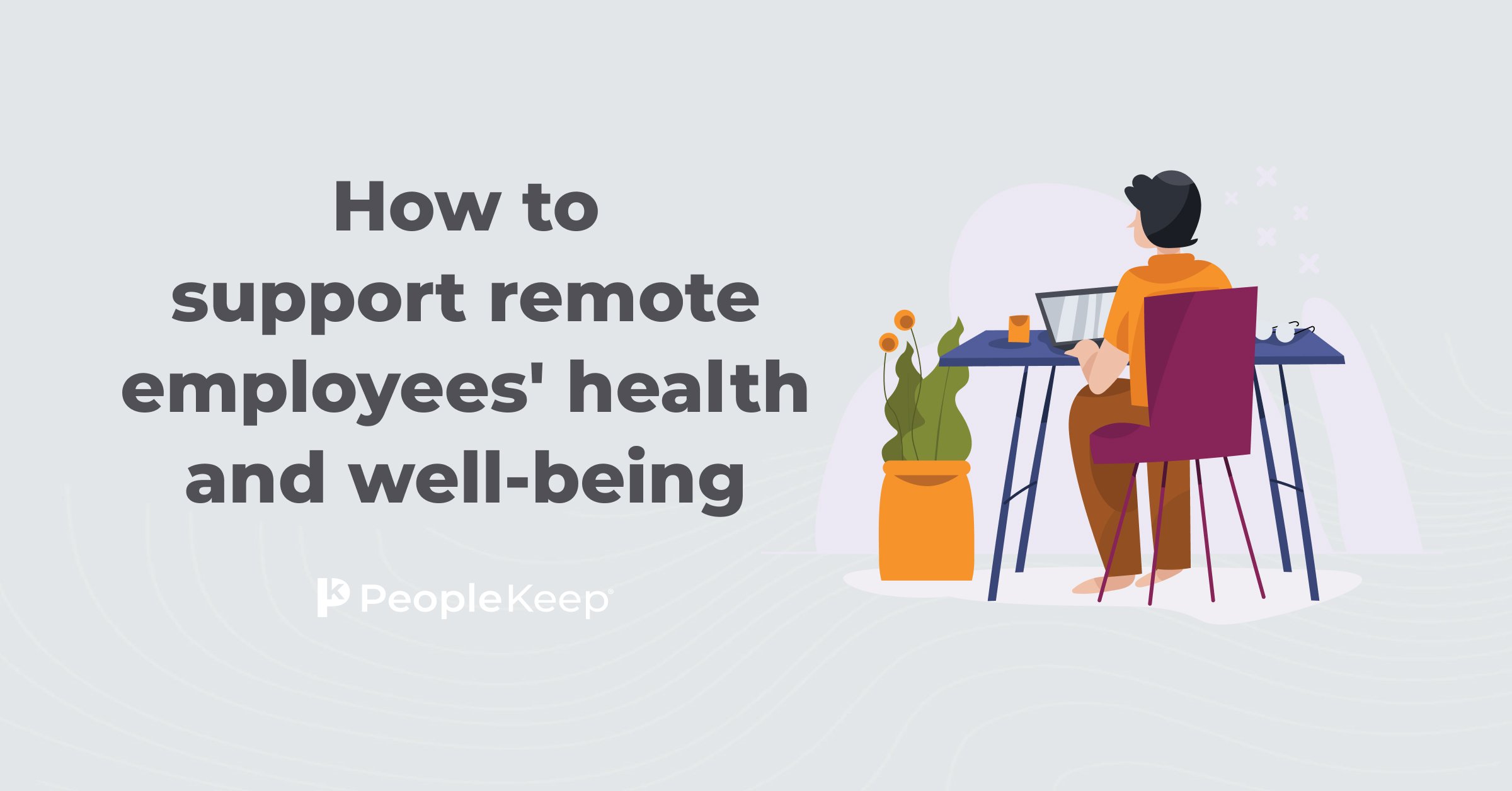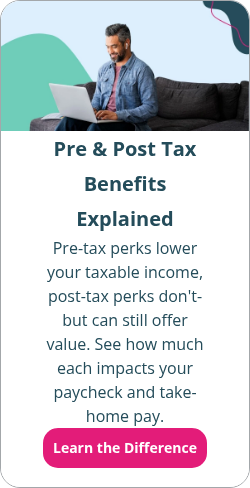Employee engagement ideas and activities
By Chase Charaba on November 7, 2023 at 7:45 AM
Employee engagement is necessary for the success and growth of any organization. Engaged employees are motivated, productive, and committed to their work. They're more likely to stay with the company long-term and positively contribute to its culture and bottom line.
However, many employers struggle with finding effective ways to engage their employees. Employee engagement in the United States has seen a decline in recent years. According to Gallup1 research, it dropped from 36% in 2020 to 34% in 2021. In 2022, 32% of full- and part-time employees working for organizations were engaged, while 18% were actively disengaged.
In this article, we'll explain what employee engagement is and how you can improve your employee experience. We'll also share employee engagement ideas for in-office and remote work environments.
What is employee engagement?
Employee engagement measures how much an employee is committed to and connected to their organization. High levels of employee engagement are associated with a reduced employee turnover rate, increased company loyalty and production, and improved company values and culture. Meanwhile, low employee engagement often leads to increased turnover.
The benefits of employee engagement are numerous. For example, engaged employees are more likely to be team-oriented, optimistic about their work and your organization, and passionate about what they do. They may go above and beyond what you require of them.
Disengaged workers, however, may display signs of absenteeism, have a negative attitude toward their work or your organization, and lack a sense of community.
Quiet quitting is when your employees are disengaged to the point that they only do the minimum you expect from them. A Gallup poll2 found that quiet quitters make up at least 50% of the U.S. workforce.
With the number of disengaged employees growing, this can pose a problem for a workforce built on extra effort and collaboration to meet growing customer needs.
Employee engagement isn't the same as job satisfaction, however. While the two often go hand-in-hand, employee satisfaction measures how employees feel about their work. Employee engagement is how involved the employee is in advancing your organization's goals.
Why does employee engagement matter?
Improving your employee engagement efforts can have excellent returns for your organization. Not only are engaged employees more productive, but they're less likely to be absent.
According to the Society for Human Resource Management3 (SHRM), construction-equipment manufacturer Caterpillar saved $8.8 million in decreased attrition and absenteeism thanks to increased employee engagement. They also saw a $2 million profit increase and a 34% increase in highly satisfied customers.
Engaged employees are loyal to your organization and are willing to recommend your organization to others. They're also happy to suggest potential job candidates for your organization because they have a sense of pride in the organization.
Improving your employee engagement can also reduce staff turnover, saving you more time and money on talent acquisition costs so that you can focus on growing your organization.
While these are all excellent benefits for your organization, improving employee engagement can have a positive impact on your employees. Providing your team with the tools, activities, and benefits that promote employee engagement gives employees a better sense of connection to your organization and their co-workers.
It also helps them to find purpose and meaning in their work, especially if it gives them career development opportunities that will help them in their long-term career path. After all, disengaged employees often feel undervalued and unappreciated in the workplace, leading them to search for better opportunities.
Why are employee engagement activities important?
Now that we've established why employee engagement is essential for your organization's success, you might be wondering how you can improve engagement. One of the best ways to do this is through employee engagement activities.
Providing ample opportunities for employees to engage with your organization will result in greater job satisfaction and retention. Involving staff in company meetings, creating a fun company event, ensuring everyone feels included, and providing quality employee benefits are great ways to boost engagement.
You might even consider creating a culture committee at your company to plan social events, be the main drivers of employee engagement, and head up a formal employee engagement program.
Employee engagement activities that keep employees happy
Employee engagement initiatives aren't only for larger companies. Organizations of all sizes can change their company culture and add a personal touch to their employees' day.
Now that we've seen how some of the top-rated companies keep their employees engaged, here are a few tips you can follow to get your employees excited about work. We've included a list of employee engagement ideas below that can work for both in-office and remote teams.
1. Use half-day Fridays to do something fun as a team
Half-day Fridays are becoming a popular perk for employers, especially during the summer. These changes come as some organizations abolish the five-day workweek entirely.
Instead of giving your employees Fridays off, you can also use it as a team-building day to promote employee engagement and company culture.
You and your team could do a trivia night, host a murder mystery party, do a movie night, or do fun company outings such as bowling. Remote employees can also get in on the fun with virtual happy hours, escape rooms, trivia, and game shows. During the events, employees can submit their favorite songs for a playlist. You can encourage some friendly competition by offering rewards to the winning teams. The possibilities for fun Fridays are endless.
These fun activities allow your employees to get to know each other better and relax.
2. Show employees how their roles matter to the overall mission, vision, and values
One of the biggest factors in employee disengagement is not understanding how their work matters to your organization and your overall mission, vision, and values. Employees tend to dislike busy work that seems to have no real purpose or significance.
A great way to empower your employees and reengage them is to share how their work impacts your organization and fits in with the company's mission. Let your employees know how much you appreciate them and their work and how essential they are to your organization's success.
This may seem like a small gesture, but it can go a long way toward making your employees feel valued and appreciated.
3. Give out tokens of appreciation or gifts
Small tokens of appreciation or gifts can make employees feel valued. They're also a fun way to do something special for your staff.
Employee gifts don't need to be extravagant to be effective. You could give all of your employees a houseplant to celebrate spring, a gift card to a local restaurant for their birthdays, candy for Halloween, the holidays, or Valentine's Day, or other small gifts just to uplift your employees.
You can also use a subscription service that ships gifts to your remote employees to help them feel connected to your organization in the absence of in-office perks.
4. Give employees more responsibility
Another way to engage your employees is to give them more responsibility. However, this doesn't mean giving your employees more tasks or extra work.
Including your employees in brand strategy meetings, brainstorming sessions, and large projects helps add meaning to their work and gives them a chance to do something other than their regular job duties. It empowers your employees to go above and beyond, think creatively, and be innovative.
Allowing your employees to contribute ideas and work on projects helps push your organization forward and better meet the challenges of your competitors.
5. Offer praise and appreciation
Another simple way to improve employee engagement and retention is to praise your employees' work and recognize their achievements. Words of encouragement and praise help your employees feel appreciated and inspire them to continue to work hard and meet their goals.
If something hasn't gone right, use the opportunity to teach your employees so that the same mistake doesn't happen again. Then, encourage them to ensure that they meet your goals or find a solution to the problem.
Some organizations also give out employee awards and recognition during meetings or company events. However, even just one-on-one praise can benefit your organization.
6. Implement a health and wellness program
Employee benefits are one of the best ways to improve employee retention rates and engagement. Many organizations offer a workplace wellness program to help employees avoid illness, promote healthier lifestyles, and improve overall employee well-being.
There are many different types of wellness programs, all with different goals. No matter how you design your health and wellness program, improving employee well-being can boost productivity, engagement, and job satisfaction.
Examples of wellness program features include:
- Smoking cessation programs
- Employee health screenings
- Nutrition classes and resources
- Weight loss programs
- Stress management classes
- Health and wellness perks
- Fun activities such as yoga classes
You can offer a wellness stipend to give your employees more freedom over their wellness benefits. This allows you to give your employees an allowance for their wellness expenses. You simply set up a monthly allowance for reimbursement, and employees choose the items they want to purchase, such as gym memberships or wellness and fitness apps.
While employee stipends are taxable, they're a great way to ensure that all of your employees, both in-office and remote, are included in a wellness plan that's inclusive and works for them.
7. Promote a healthy work-life balance
A work-life balance is essential for your employees to remain engaged in the workplace. Without time to relax and recharge, they'll quickly experience burnout and look for other employment opportunities.
Many employees, Gen Zers and Millennials, in particular, desire more flexibility in their work schedules and workplaces.
Flexible hours and remote work are great benefits that help employees achieve a better work-life balance. They are also great perks that can help your organization attract top talent. Plus, offering remote work can help you reconfigure or downsize your office space to promote activities and collaboration.
Another way to promote a work-life balance is by offering unlimited PTO. Your employees can take as much time off as they want without impacting your organization's overall production. This gives your employees the time they need to tend to their personal lives while getting a break from the daily grind. They can take a wellness day here and there or have time off when they're sick and need time to mend.
Giving employees time off lets them relax and come back feeling refreshed, reenergized, and ready to get to work.
8. Host team lunches or potlucks
Another fun employee engagement activity is to host team lunches. Office lunches and potlucks are a way to get to know your staff better and give your employees a chance to socialize. You can also use them alongside team-building activities, seminars, and education opportunities.
Employees with frequent or occasional communal lunches can boost productivity and employee morale.
For virtual teams, you can still have team lunches over conference calls. Consider sending all of your employees a gift card to a food delivery service like DoorDash or GrubHub so that everyone can purchase the food that they want.
9. Embrace diversity and inclusion
Diversity, equity, inclusion, and belonging, or DEIB, is about treating all of your employees with respect and being inclusive of everyone's identity and background, such as race, ethnicity, sexual orientation, and gender. It's also about ensuring that each employee feels welcome in the workplace.
Introducing DEIB activities and principles into your workplace results in a happier workforce that can work together and stay engaged.
When employees feel like they can't be themselves in the workplace, they won't work at their fullest potential. You'll also stifle creativity and innovation.
Planning DEIB activities and ensuring that your organization adheres to DEIB standards ensures that your organization is a place where people want to work and feel safe being themselves.
10. Offer coaching, training, and continuing education benefits
Professional development opportunities are a way to invest in your employees. When you allow employees to build on their skills, such as through workshops, industry conferences, and classes, you empower them and strengthen the overall skillset of your organization.
Offering education benefits can help you improve productivity and autonomy and attract new talent.
Common education benefits include:
- Tuition assistance or reimbursement
- Training
- Education conferences
- Personal development courses
- Student loan repayment plans
- In-house professional development
- Offering courses or paying for certificate exams
11. Give out company swag
Giving out company swag is an easy way to boost employee satisfaction and engagement. Many companies will release new swag items every month or quarter and provide them to their teams, such as shirts, socks, koozies, lanyards, or other items. Others will offer them once per year or during employee onboarding.
No matter your swag release schedule, it can be a fun way to promote engagement and brand loyalty.
12. Provide charity and volunteer opportunities
Providing opportunities for employees to participate in charities or volunteer is another way to promote engagement and increase employee morale. Many organizations, such as Salesforce, will match charitable donations or offer time off for volunteering. Other companies may run clothing or food drives to help their communities.
You can also host your own charity events and allow community members to get involved.
13. Seek valuable feedback with surveys, polls, and meetings
Employee feedback is essential for ensuring employees remain engaged and satisfied. If you don't seek input from your employees, you won't know how they feel or if your engagement programs are working.
To measure the success of your actions, you'll want to organize an employee engagement tracking survey.
Potential questions for your survey might include:
- What employees liked about their job this week/month
- What employees didn't like about their job this week/month
- What they think could be improved
- Engagement activity ideas
Don't use loaded questions in your employee surveys. Questions such as “Do you get excited about coming to work on Monday mornings?” can generate many negative responses, even if the employee is engaged and passionate about their work.
Long surveys also reduce participation rates. Try to keep your employee surveys concise.
You should also poll your employees to find benefits and perks they'd find beneficial. After all, employee benefits play a significant role in job satisfaction and employee retention.
14. Improve communication with employees
Improving internal communication is vital for improving employee engagement and job satisfaction. Keeping your employees up-to-date with important information and resources is essential for the success of your organization.
An internal company newsletter is one way to ensure that your employees are kept in the loop while also showcasing some of the unique things you've been working on and allowing your team to get to know each other better. Consider having sections for news, staff features, important dates and projects, and other relevant information and resources.
You can send out your newsletter monthly, weekly, or whenever is best for your organization.
You should also ensure your hiring process and onboarding process set employees up for success with clear expectations and the tools needed for new hires to complete their work. This will ensure that employees don't disengage as soon as they start.
Weekly or monthly meetings, including one-on-one meetings, to check in with and keep your employees informed are also essential for keeping employees engaged and promoting complete transparency.
15. Increase employee compensation packages
Finally, if you want your employees to stay with your organization for the long haul, you'll need to offer a competitive benefits package.
As discussed earlier, an employee wellness program is a great way to promote productivity and engagement. However, there are other employee benefits you should consider as well.
Health benefits are one of the most common employee benefits that organizations offer, and for a good reason. Healthcare costs are expensive. Supporting your employees' physical and mental health is one of the best things you can do to retain your workers.
Many health benefits are available, including traditional group health insurance, HSAs, and FSAs. However, offering your employees a personalized health benefit such as a health reimbursement arrangement (HRA) is often better.
HRAs are great for organizations that want to offer an individualized benefit while saving time and money compared to group health insurance. You can reimburse your employees for their qualifying medical expenses, such as health insurance premiums and out-of-pocket healthcare costs, with an HRA. And HRAs are tax-free for both the employer and employee.
Three of the most popular types of HRAs are:
- Qualified small employer HRA (QSEHRA)
- Individual coverage HRA (ICHRA)
- Group coverage HRA (GCHRA), also known as an integrated HRA
Conclusion
Boosting employee engagement is important for reducing employee turnover and quiet quitting, increasing productivity, and growing your business. By offering ample opportunities for employees to get involved with your organization and engage with one another through employee engagement initiatives, you can create a workplace where your employees want to be.
We hope these employee engagement strategies helped you determine what steps you need to take to improve your organization's engagement rate. Keeping your employees engaged regularly can make all the difference between them staying or leaving for a better opportunity with your competitors.
If you're interested in offering personalized benefits to your employees, PeopleKeep can help! With our HRA administration software, you can easily set up a health benefit.
This blog article was originally published on March 19, 2015. It was last updated on November 7, 2023.
Check out more resources
See these related articles

How to support remote employees' health and well-being
Discover strategies for supporting the health and well-being of your remote employees with this comprehensive guide. Start taking care of your team today!

20 affordable benefits to offer
Looking for affordable ways to enhance your employee benefits package? Explore our list of 20 budget-friendly options to keep your team happy and motivated.

Veterinary clinic employee benefits
Explore veterinarian benefits tailored for clinic staff. Discover how to offer flexible, affordable employee benefits that support retention and care teams.



